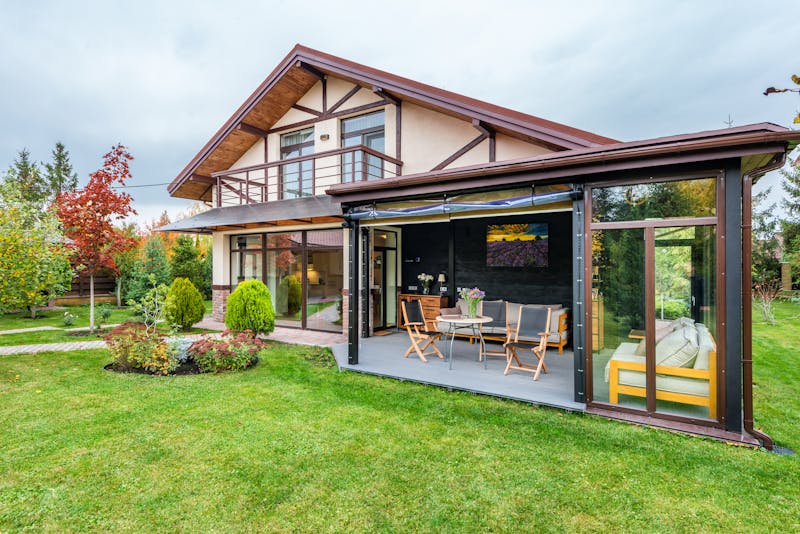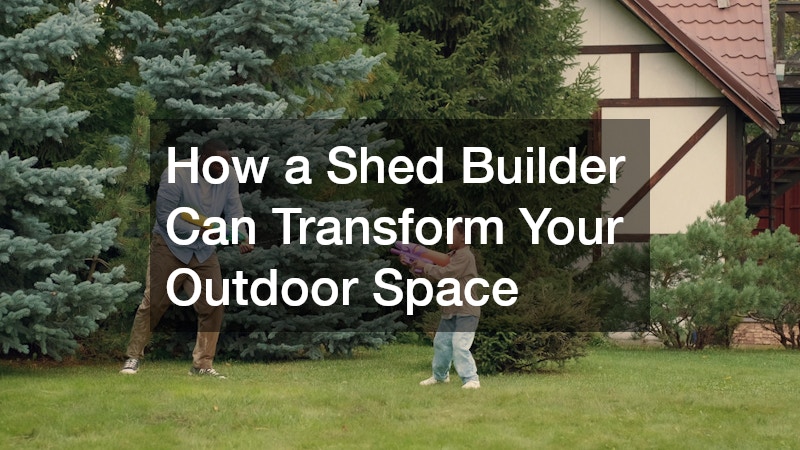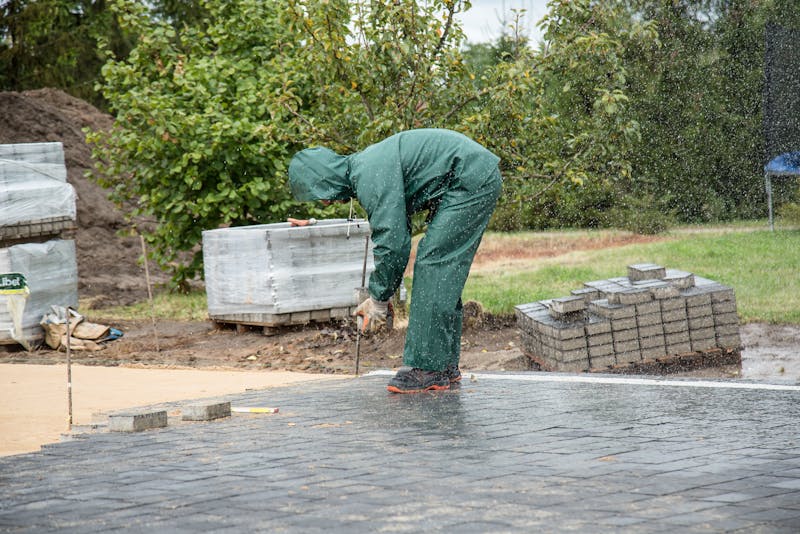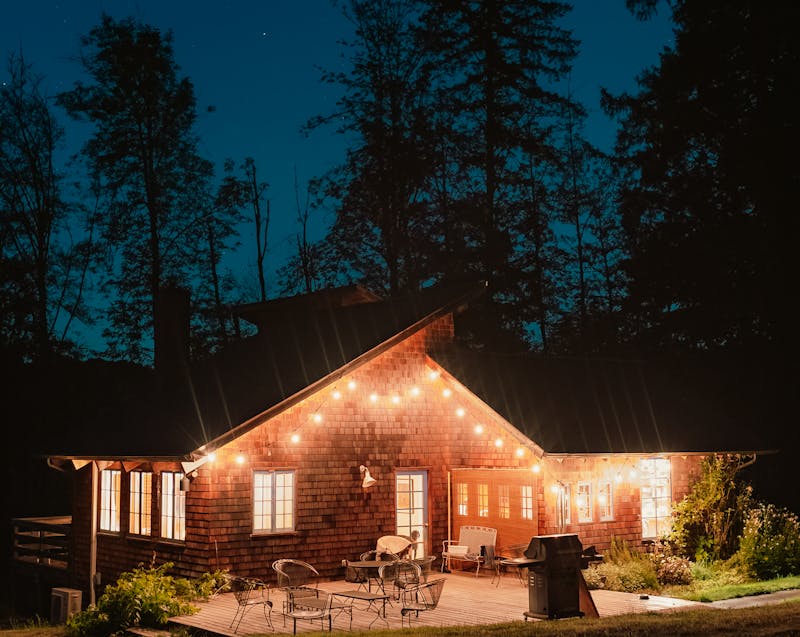- A patio is a ground-level outdoor living space designed for relaxation, dining, or entertainment.
- Adding a patio can boost property value and enhance your home’s functionality.
- Popular patio materials include concrete, stone, brick, pavers, and tile, each with unique benefits.
- Patios can serve multiple purposes: dining areas, entertainment spaces, garden extensions, or relaxation zones.
- Proper layout, furniture, landscaping, and lighting maximize comfort and usability.
- Regular maintenance, including cleaning, sealing, and minor repairs, ensures durability and long-term appeal.
- Patios can be customized to fit any home style or backyard size, making them versatile and functional.
Outdoor living spaces have become increasingly important in modern home design. Among these, the patio is one of the most versatile and popular options for homeowners. But what exactly is a patio, and why should you consider adding one to your home? From boosting property value to providing a relaxing retreat, patios offer practical and aesthetic advantages.
This guide explores the concept of patios, their benefits, common uses, and popular layouts to help homeowners make informed design choices.
What Is a Patio? Understanding the Basics
A patio is a paved outdoor area typically attached to a home, designed for relaxation, dining, or entertainment. Unlike a deck, which is usually elevated, patios are generally built at ground level and can be made from various materials, including concrete, stone, brick, or pavers.
Patios serve as a seamless transition between indoor and outdoor living spaces, providing homeowners with an area to enjoy nature while remaining close to home comforts. They can be simple and functional or elaborate and luxurious, depending on your design goals and budget.
Key Characteristics of a Patio:
- Typically located adjacent to a house or backyard.
- Constructed using durable materials like concrete, stone, or tile.
- Often includes seating, dining areas, or decorative landscaping.
- Ground-level design, differentiating it from elevated decks.
Patios are highly customizable, making them suitable for homes of all sizes. Whether you have a compact backyard or a sprawling estate, patios can enhance both functionality and aesthetics.
What Are the Benefits of Adding a Patio to Your Home?
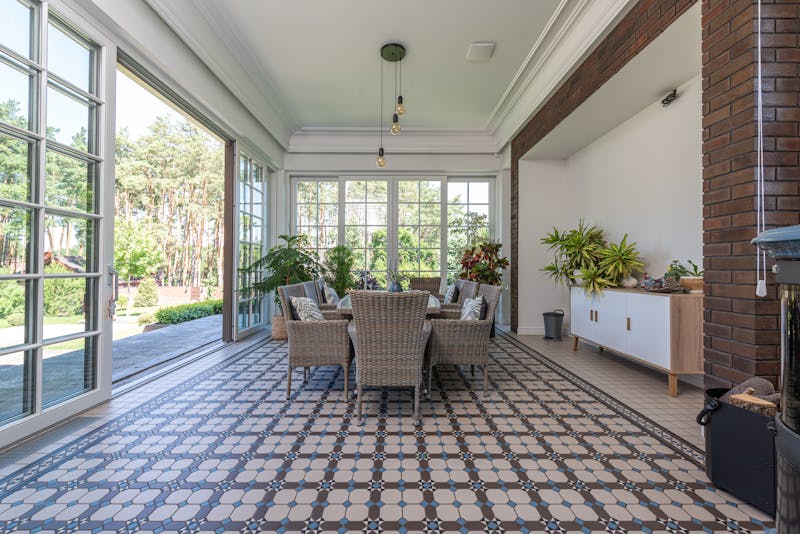
Adding a patio to your property offers a range of benefits that go beyond simple aesthetics. Here’s why homeowners increasingly consider patios as an essential part of home design:
1. Enhances Outdoor Living
A well-designed patio extends your living space outdoors. It provides a dedicated area for dining, entertaining guests, or simply relaxing with a book.
2. Increases Property Value
Patios are attractive selling points. A professionally designed patio can boost home resale value by enhancing curb appeal and functional space.
3. Low Maintenance Option
Compared to lawns or gardens, patios require minimal upkeep. Materials like stone or concrete are easy to clean, durable, and weather-resistant.
4. Flexible Design Possibilities
Patios can be customized to fit any style—from modern minimalist to rustic charm. You can incorporate fire pits, water features, or built-in seating to create a personalized outdoor retreat.
5. Promotes Outdoor Activities
Having a patio encourages homeowners and families to spend more time outside, promoting relaxation, exercise, and social interaction.
Overall, patios are more than just an aesthetic addition; they provide functional, financial, and lifestyle advantages for homeowners.
Common Uses of Patios in Modern Homes
Patios are versatile spaces that can be adapted for various purposes depending on homeowners’ needs. Here are some of the most common uses:
Outdoor Dining Area
Patios are ideal for creating an outdoor dining space. With a table, chairs, and perhaps a pergola for shade, homeowners can enjoy meals in a pleasant, natural setting.
Relaxation Zone
Many patios are designed as serene retreats featuring lounge chairs, hammocks, or even outdoor sofas. Adding plants, ambient lighting, and soft textiles enhances comfort and tranquility.
Entertainment Space
Patios serve as perfect venues for hosting social gatherings, from barbecues to cocktail parties. Outdoor kitchens, fire pits, and built-in seating can make entertaining effortless.
Garden Extension
Patios can complement gardens, serving as a viewing platform or a space to display potted plants. This integration blurs the line between functional living areas and natural landscaping.
Fitness or Meditation Area
Some homeowners use patios as spaces for yoga, meditation, or light exercise. Outdoor environments can enhance mindfulness and well-being compared to indoor settings.
By understanding these common uses, homeowners can better envision how a patio will fit into their lifestyle and home layout.
Popular Patio Materials and Their Benefits
Choosing the right material for your patio is crucial for durability, aesthetics, and maintenance. Here’s a breakdown of popular patio materials and what they offer:
1. Concrete Patios
- Pros: Durable, cost-effective, versatile. Can be stamped or stained for added visual appeal.
- Cons: Prone to cracking over time; requires occasional sealing.
2. Stone Patios
- Pros: Natural, timeless look. Highly durable and weather-resistant.
- Cons: Can be expensive and requires professional installation.
3. Brick Patios
- Pros: Classic aesthetic, excellent for traditional or rustic homes.
- Cons: Can shift over time; may require occasional maintenance.
4. Paver Patios
- Pros: Wide range of colors and patterns. Easy to repair individual pavers.
- Cons: Installation costs can be higher than concrete.
5. Tile or Slate Patios
- Pros: Sleek, modern look. Durable if properly installed.
- Cons: Can be slippery when wet; may require sealing.
Choosing the right material depends on your budget, design preferences, and long-term maintenance expectations. Combining materials can also create unique visual interest.
How to Choose the Right Patio Layout
Selecting the ideal patio layout is key to maximizing space and functionality. Consider the following factors when planning your patio:
Size and Shape
- Assess your backyard space and determine the optimal patio size.
- Common shapes include rectangular, square, circular, or freeform designs.
Access and Flow
- Ensure easy access from the home’s interior and other outdoor areas.
- Positioning near the kitchen or living room enhances convenience.
Furniture and Features
- Plan enough space for seating, dining, or entertainment zones.
- Consider features like fire pits, outdoor kitchens, or planters to add functionality.
Privacy and Shade
- Use pergolas, umbrellas, or landscaping for shade and privacy.
- Incorporate screens, trellises, or tall plants to create secluded areas.
Traffic Patterns
- Design pathways and transitions that facilitate movement around the patio.
- Avoid overcrowding to maintain comfort and safety.
By considering these elements, homeowners can create patios that are functional, inviting, and visually appealing.
Patio Styles to Complement Your Home Design
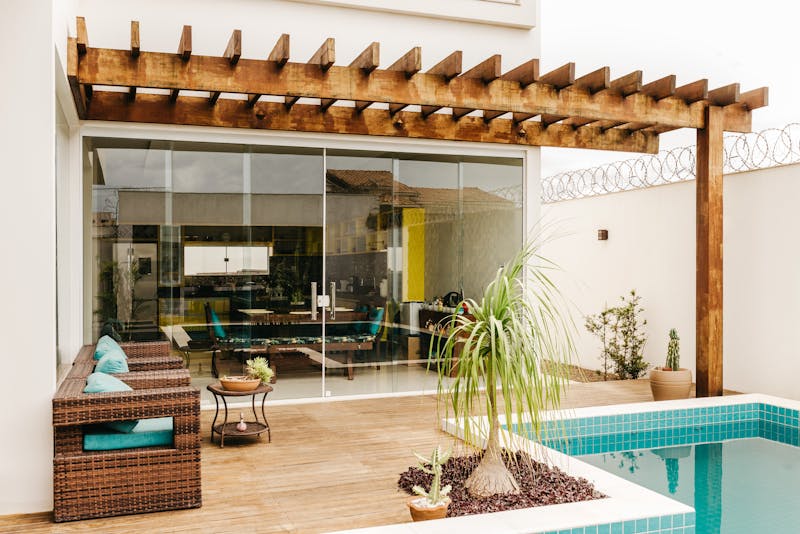
Patios come in various styles to suit different architectural aesthetics. Here are some popular patio styles:
Modern Minimalist
- Clean lines, neutral colors, and sleek materials.
- Often includes concrete or large-format tiles with minimal furniture.
Rustic Charm
- Natural materials like stone, brick, or wood.
- Warm and inviting, often with cozy furniture and fire features.
Mediterranean Style
- Incorporates terracotta tiles, wrought iron furniture, and vibrant plants.
- Evokes a relaxed, resort-like atmosphere.
Contemporary Luxury
- Focuses on high-end finishes, outdoor kitchens, water features, and lighting.
- Perfect for homeowners seeking a resort-style backyard.
Cottage or Garden Patio
- Surrounded by lush greenery, flowers, and whimsical décor.
- Ideal for homeowners who enjoy gardening and outdoor aesthetics.
Choosing a style that complements your home’s architecture ensures that the patio feels like a natural extension of your living space.
Patio Landscaping and Decor Tips
Landscaping and décor play a crucial role in enhancing the overall appeal of a patio. Here are practical tips for homeowners:
- Incorporate Planters and Greenery: Use pots, raised beds, or vertical gardens to bring life to the patio.
- Lighting Matters: String lights, lanterns, or LED fixtures can create ambiance for evening use.
- Comfortable Seating: Include cushions, rugs, or weather-resistant furniture for added comfort.
- Decorative Elements: Add fire pits, fountains, or sculptures to make the space unique.
- Seasonal Adaptations: Use shade sails, umbrellas, or heaters to make the patio functional year-round.
By thoughtfully combining landscaping and décor, your patio becomes a true extension of your home’s personality and style.
How to Maintain Your Patio
Proper maintenance ensures that your patio remains attractive and functional for years. Here’s a quick guide:
- Cleaning: Sweep the floor regularly to remove dirt and debris. Use mild soap and water or pressure wash from time to time.
- Sealing: Apply sealant to stone, brick, or concrete patios to protect against stains and weathering.
- Repairs: Replace cracked pavers or tiles promptly. Refill gaps with sand or grout as needed.
- Furniture Care: Store or cover furniture during harsh weather to prevent damage.
- Seasonal Preparation: Winterize by removing plants or cushions and checking for drainage issues.
Routine care minimizes long-term repair costs and preserves the beauty of your outdoor space.
Frequently Asked Questions About Patios
How Does a Patio Differ from a Deck?
- Patios are usually ground-level, made from stone, concrete, or pavers.
- Decks are elevated structures made primarily of wood or composite materials.
Can I Build a Patio Myself?
- Yes, small patios can be DIY projects, especially using pavers or concrete slabs.
- Larger or more complex patios may require professional installation.
How Much Does a Patio Cost?
- Cost varies by material, size, and design.
- Simple concrete patios can start around $1,500, while luxury stone patios may exceed $10,000.
What Is the Best Patio for Small Backyards?
- Compact patios with modular furniture, vertical planters, and multifunctional zones work best for limited spaces.
Are Patios Suitable for All Climates?
- Yes, but material choice is crucial. Stone and concrete are durable in most weather, while wood may require treatment in wet or snowy regions.
Conclusion
A patio is more than just an outdoor area—it’s a multifunctional space that enhances your home’s value, functionality, and aesthetic appeal. From dining and relaxation to entertainment and gardening, patios provide homeowners with endless opportunities to enjoy outdoor living. Choosing the right materials, layout, and style ensures that your patio complements your home and meets your lifestyle needs. With proper design, landscaping, and maintenance, a patio can become your favorite retreat, offering comfort and versatility for years to come.
